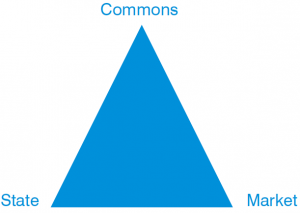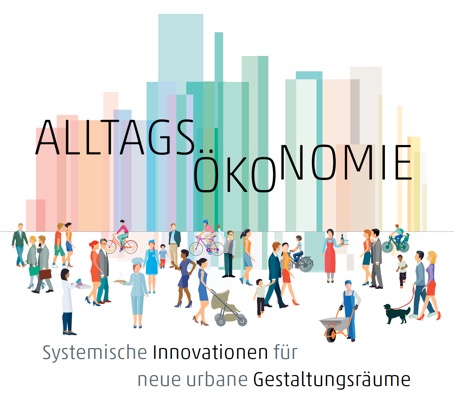Imagine: an urban politician wants to impose that some streets become car-free during summer. Even if reasons are good – better air quality, kids get room to play – the result is quite predictable. The residents of the streets would revolt, for different reasons. Some would feel ignored as citizen, others would stand on their right to drive their car to their door, etc. The result: the politician has to withdraw the proposal, disappointed by these negative reactions. So, the gap widens between politics and people.
But what happens if an independent network of collaborating citizens, businesses and organisations, supported by the city government, develops the positive narrative of a Living Street as the sustainable place where inhabitants always have dreamed of? They offer the possibility that if people are interested and want to test it in their street, they have to convince their neighbours of this potentially great idea. The answer we know in the city of Ghent. Since 2013, several streets are transformed in summer into car-free ‘places’ for community, picnic benches, playgrounds for children, etc.
The Living Streets are not a top-down project, nor a bottom-up citizens’ initiative. It’s a form of co-creation between residents, the city and organizations. Residents join forces, get to know each other better and go to work with challenges in their street (more meeting space, isolation of older residents, traffic-unsafe street layout, etc.). For the city government, Living Streets are a testing ground for parking solutions, street furnishing or the search for new forms of resident participation. The civil servants also roll up their sleeves. They seek solutions, help mediate in conflicts, make their expertise available and translate experiences into new policies.
Living Streets are one of the examples of how the city of Ghent, just as other cities like Bologna and Barcelona, is changing the traditional top-down politics of our modern society. In the latter, approaches to provide services, introduce innovations or manage resources, tended to be presented as a stark choice between state organisations or market mechanisms. This binary division ignores a crucial third possibility – initiatives by autonomous citizens – and underestimates the many possibilities of citizens and (local) authorities working together.
Living Streets in Ghent are an illustration of a broader societal challenge. If, for instance, we look at opinions about how we should organize housing, they tend to lie on a line connecting two opposing views. On the left end, there is the view that the government is the best option to organise it in a fair way. On the other side, it is argued that only the market can allocate houses in an optimal manner. What matters is that discussions on this, as well as other areas of society, are trapped in this binary framework. It is as if the citizen – the bearer of democracy – may only watch from the side-lines and is unable to propose solutions to societal needs. Remaining on the question of housing for elderly people, arguments for citizens’ initiatives, the Abbeyfield Houses for example, are rarely heard in the mainstream debate. This initiative was born in 1956 in Britain in response to a growing social problem: an increasing number of elderly people in the poor neighbourhoods of London were no longer able to live independently in a dignified manner. Today, the British Abbeyfield Society manages 700 homes with 7,000 seniors, aided by 10,000 volunteers. Abbeyfield is a concept of collective living and a volunteer movement which has already taken root in many countries.
This is not to imply that citizens’ initiatives are the panacea for all challenges; but they can be an important part of the future if we are willing to widen our gaze. These examples clearly demonstrate that we have three basic options to address challenges and to organise society. This broadened view of society can be visualised in the following triangle.
The binary spectrum discussed above is actually only the line at the base of the triangle. Once one conceptualizes the three corner points, with autonomy above as the vertical dimension, it becomes immediately clear that when people only look for solutions in the corners of the market or of the state, they also plead for less citizens’ involvement. The horizontal baseline is typical of modern industrial society; transitioning from this line up to the top of the triangle is a feature of the current post-industrial society that promotes other forms of participation in social life from the perspective of autonomy, with as central example citizens collectives (commons).
As a source of social innovation, the importance of the autonomous sphere cannot be underestimated; a lot of solutions to societal challenges did not come at first from the government or from business, but from creative citizens. The aforementioned Abbeyfield Housing is a good example, as are social innovations such as car sharing, organic farming initiatives, and food teams. And who built the first windmills to produce electricity? It was citizens developing a positive alternative to nuclear plants in countries like Denmark and Ireland. The triangle shows the importance of a larger independent social sphere where people can deploy their capabilities without the interference of market or state.
From public-private to public-civil partnerships
Most citizens’ initiatives rely in one way or another on cooperation with the state. Just as successful projects of local authorities need the participation of citizens. This is not a problem: it is the future! The neoliberal regime of the last thirty years dictated that the best approach organising anything in society was one based on markets and competition. This has led to a wide array of public-private partnerships, which, most of the time, leads to a government losing its grip on policy areas and citizens paying too much tax for the services delivered. Again, the triangle clearly shows the alternative, future way to develop: public-civil partnership. With more and more citizens taking initiatives of their own, the challenge for governments is to turn themselves into a Partner State, as is already happening in Bologna and Ghent. Here, politicians don’t see their political constituency as a region to manage from above, but as a community of citizens with a lot of experience and creativity.
Leaving top-down politics behind, they develop forms of co-creation and co-production.
As the example of Living Streets shows, with public-civil partnerships, an underestimated area of the triangle of societal possibilities is explored in a positive way. Stimulating and sustaining the commons requires an active state which develops new institutions that allow citizens to engage in transition projects.
A Commons Transition Plan
Witnessing the proliferation of citizen initiatives, Ghent invited the international commons-expert Michel Bauwens to devise a Commons Transition Plan for Ghent. The strength of this report is that it not only formulates concrete innovative proposals based on the concept of the Partner State, which builds on horizontal co-production projects and civil-public partnerships. It at the same time poses the question if cities can be actors in social, economic, and institutional change at a time when nation-states are no longer capable of regulating the transnational economy. Can networks of cities be part of a new transnational governance model?
The Transition Plan start with a critical analysis: Ghent does not give the same level of institutional support to the commons as it does to the mainstream start-ups. If this does not change, the commons could remain marginal as an economic player. This brings us to the crucial part of the Bauwens‘s report — coherent proposals for new institutions that allow the consolidation of the new wave of commons. There are three clusters of proposals:
The first is a clear structure that installs a supportive relationship between the city government and people running and participating in commons initiatives. Bauwens proposes the creation of a City Lab that helps people develop their proposals and prepares Commons Agreements between the city and the new initiatives, modeled after the existing Bologna Regulation on Commons.
Second, commons should play a key role in the transition towards a resilient city. Fortunately, Ghent already has a transition food strategy — Gent en Garde — which embodies the core institutional logic needed. Central here is the Food Council, which meets regularly and brings together relevant experts. It includes representatives of the current forces at play and has the strengths and weaknesses of representative organizations. The latter have power and influence but will probably defend the existing food system. The Food Working Group is one of the members. It mobilizes those active in commons‘ initiatives and works along a contributive logic. This means people are not looking to extract value (make private profit) but want to generate social value in the first place. The combination of a representative and contributive logic can create a more performant democracy. This, however, requires people participating in the commons to have a greater voice in the city. This is possible through the establishment of two new institutions: the Assembly of the Commons, for all citizens active in commons‘ initiatives, and the Chamber of the Commons, for all social entrepreneurs creating livelihoods around these commons.
Last not but least, the proposal is to provide people who want to engage in the commons the same support as mainstream profit-driven start-up gets. In Ghent (and in other cities, too), this entails at least three things: the creation of an incubator for a commons-based economy, the establishment of a public city bank, and the development of mutualized commons infrastructures through inter-city cooperation. So as citizens in Amsterdam are developing Fairbnb, a social cooperative as alternative to Airbnb, this digital platform could be used in cities all over the world.
Next to this focus on the role of citizens’ collectives, Ghent has introduced a whole array of innovations to improve the democratic participation of its citizens, such as the Citizens’ Budget. In December 2016 the City of Ghent called upon every resident of Ghent to submit proposals to help tackle challenges in their city, neighbourhood and/or district. An art studio for children? More greenery in the streets? Support for newcomers? A project to bring associations and businesses together? Anything was possible. The city set aside 1.35 million euros and every resident could make proposals. From the start, the ‘Citizens’ Budget’ was an ambitious next step in the city council’s extensive tradition of participation and ‘having your say’: by ceding the decision-making power for a part of the government budget, Ghent explored different kinds of relationships between individual and public interests, between citizens and policy, and between diverse domains and sectors. In total, 261 proposals were submitted to www.burgerbudget.gent in a short period of time. There was a vote on 105 projects, and 17 initiatives are now being implemented.
A long but exciting road to go
Ghent shows that we are witnessing a whole new form of politics, where top down policies are gradually replaced by the perspective of the partner state. It grasps the potential of the energy of more and more citizens wanting to get their future back in their hands, while at the same acknowledging the importance of politicians having the courage to set bold social and ecological goals. It depends on creative civil servants that get the autonomy to leave their desks and become a kind of
civil entrepreneurs. The potential of public-civil partnerships is clear, the challenge for every city is to develop its own, situated model and institutions to make it happen.

Public-Civil-Partnerships for a Better City. Dirk Holemans. Published in: WerkstattberichtAlltagsökonomie in Wien – ein neuer Zugang zu Ökonomie und Stadt

Recent Comments